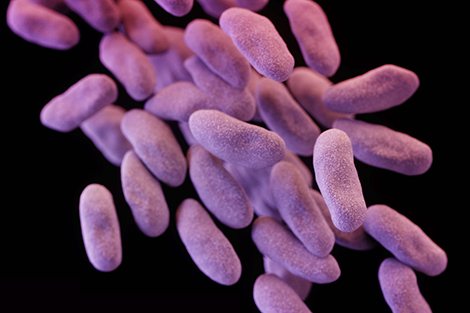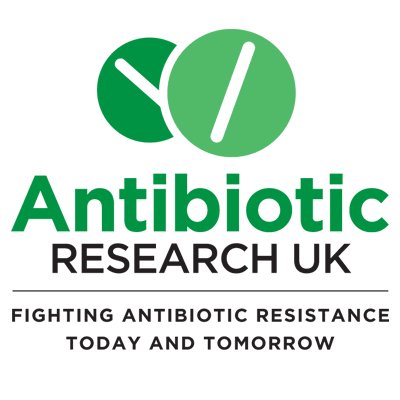carbapenems
See the following -
A Deadly Superbug Appears to Be Invading America's Hospitals
A dangerous type of superbug has more tricks up its sleeves than we may be giving it credit for, a recent study suggests. The researchers found that this class of bacteria, CREs — that's short for carbapenem-resistant Enterobacteriaceae — has more ways to evade antibiotics than have been currently identified, and that these bugs share their tricks readily across the families of bacteria that make up this grouping...
- Login to post comments
A Nevada Woman Dies of a Superbug Resistant to Every Available Antibiotic in the US
If it sometimes seems like the idea of antibiotic resistance, though unsettling, is more theoretical than real, please read on. Public health officials from Nevada are reporting on a case of a woman who died in Reno in September from an incurable infection. Testing showed the superbug that had spread throughout her system could fend off 26 different antibiotics. “It was tested against everything that’s available in the United States … and was not effective,” said Dr. Alexander Kallen, a medical officer in the Centers for Disease Control and Prevention’s division of health care quality promotion...
- Login to post comments
Antibiotic Resistance Doesn't Just Make Bacteria Harder To Kill – It Can Actually Make Them Stronger
 Bacteria can become drug-resistant in two ways – resistance can be natural, meaning that the genes conferring resistance are already present in the bacterial chromosome, or they can be acquired through mutation or by picking up antibiotic-resistance genes from other microbes. It is now possible to use new DNA-sequencing technologies to take a closer look at how the antibiotic resistance can make some bacteria weaker or stronger. And in a new study, we found that – contrary to conventional wisdom around antibiotics – resistance can actually make some bacteria fitter and even more virulent.
Bacteria can become drug-resistant in two ways – resistance can be natural, meaning that the genes conferring resistance are already present in the bacterial chromosome, or they can be acquired through mutation or by picking up antibiotic-resistance genes from other microbes. It is now possible to use new DNA-sequencing technologies to take a closer look at how the antibiotic resistance can make some bacteria weaker or stronger. And in a new study, we found that – contrary to conventional wisdom around antibiotics – resistance can actually make some bacteria fitter and even more virulent.
- Login to post comments
Drug-resistant ‘Nightmare Bacteria’ Show Worrisome Ability to Diversify and Spread
 A family of highly drug-resistant and potentially deadly bacteria may be spreading more widely—and more stealthily—than previously thought, according to a new study from Harvard T.H. Chan School of Public Health and the Broad Institute of MIT and Harvard. Researchers examined carbapenem resistant Enterobacteriaceae (CRE) causing disease in four U.S. hospitals. They found a wide variety of CRE species. They also found a wide variety of genetic traits enabling CRE to resist antibiotics, and found that these traits are transferring easily among various CRE species..
A family of highly drug-resistant and potentially deadly bacteria may be spreading more widely—and more stealthily—than previously thought, according to a new study from Harvard T.H. Chan School of Public Health and the Broad Institute of MIT and Harvard. Researchers examined carbapenem resistant Enterobacteriaceae (CRE) causing disease in four U.S. hospitals. They found a wide variety of CRE species. They also found a wide variety of genetic traits enabling CRE to resist antibiotics, and found that these traits are transferring easily among various CRE species..
- Login to post comments
First Research Programme Identifies Potential Antibiotic Resistance Breakers
 Antibiotic Research UK's first research programme finds a number of drugs that can break antibiotic resistance in Gram-negative bacteria. Antibiotic resistant infections are predicted to lead to 10 million deaths per year globally by 2050 at a cost of up to $100 trillion to the world economy. In the UK at least 5,000 people per year die from resistant infections. New research by Antibiotic Research UK (ANTRUK), the world's first charity created to develop new antibiotics in the fight against superbugs, has found Antibiotic Resistance Breakers (ARBs) in its first major lab research programme...
Antibiotic Research UK's first research programme finds a number of drugs that can break antibiotic resistance in Gram-negative bacteria. Antibiotic resistant infections are predicted to lead to 10 million deaths per year globally by 2050 at a cost of up to $100 trillion to the world economy. In the UK at least 5,000 people per year die from resistant infections. New research by Antibiotic Research UK (ANTRUK), the world's first charity created to develop new antibiotics in the fight against superbugs, has found Antibiotic Resistance Breakers (ARBs) in its first major lab research programme...
- Login to post comments
Peer into the Post-Apocalyptic Future of Antimicrobial Resistance
Aout 4 million years ago, a cave was forming in the Delaware Basin of what is now Carlsbad Caverns National Park in New Mexico. From that time on, Lechuguilla Cave remained untouched by humans or animals until its discovery in 1986—an isolated, pristine primeval ecosystem. When the bacteria found on the walls of Lechuguilla were analyzed, many of the microbes were determined not only to have resistance to natural antibiotics like penicillin, but also to synthetic antibiotics that did not exist on earth until the second half of the twentieth century...
- Login to post comments
Peer into the Post-Apocalyptic Future of Antimicrobial Resistance
Aout 4 million years ago, a cave was forming in the Delaware Basin of what is now Carlsbad Caverns National Park in New Mexico. From that time on, Lechuguilla Cave remained untouched by humans or animals until its discovery in 1986—an isolated, pristine primeval ecosystem. When the bacteria found on the walls of Lechuguilla were analyzed, many of the microbes were determined not only to have resistance to natural antibiotics like penicillin, but also to synthetic antibiotics that did not exist on earth until the second half of the twentieth century...
- Login to post comments
We May Have Reached The 'Apocalyptic Scenario' With Antibiotics
Centers for Disease Control and Prevention director Tom Frieden made headlines last year when he proclaimed that the United States would "soon be in a post-antibiotic era," meaning we'd be plagued by everyday infections that our drugs could no longer handle...
- Login to post comments